EdChoice Public Opinion Tracker: Teen Perspectives – Fall 2022
In the spring version of teen polling results—a new wave of which released today—we identified some interesting, sometimes curious, patterns. In the spring, teens were not as enthused about enrolling in a four-year college as they were before the pandemic. As a new academic year continues to unfold this fall, what will we learn from teens this time?
In partnership with Morning Consult, we surveyed a nationally representative sample of American teens (N=1,000) from Sept. 21 to Oct. 3. We asked a plethora of questions including how they get help on their schoolwork, whether they prefer in-person or remote learning, how supportive their school is, and much more. This is the fifth wave of our teens survey, following administrations in August 2020, March 2021, September 2021, and March 2022.
Here are our key takeaways.
1. Teens are feeling much better since the COVID-19 pandemic. Relationships with family, relationships with close friends, personal physical health, stress, and anxiety have all improved for teens since March of 2021. Even more encouraging, we see some growth in certain areas from March of this year as well. Teens are feeling better about their relationships with close friends (5-point increase) and their personal physical health (7-point increase) since March of this year. Teens’ stress and anxiety levels have remained steady since March but have decreased substantially compared to the levels we observed in our 2021 surveys. The demographic breakdown yields interesting results, also. Looking at the various wellness indicators since March, Hispanic and urban teens report feeling much better. The same can be said for 9th and 10th grade teens and teens from rural areas. Notably, although female teenagers feel a bit better in various wellness areas compared to March, they generally are still feeling worse off since the pandemic began. In comparison, male teenagers feel much better.
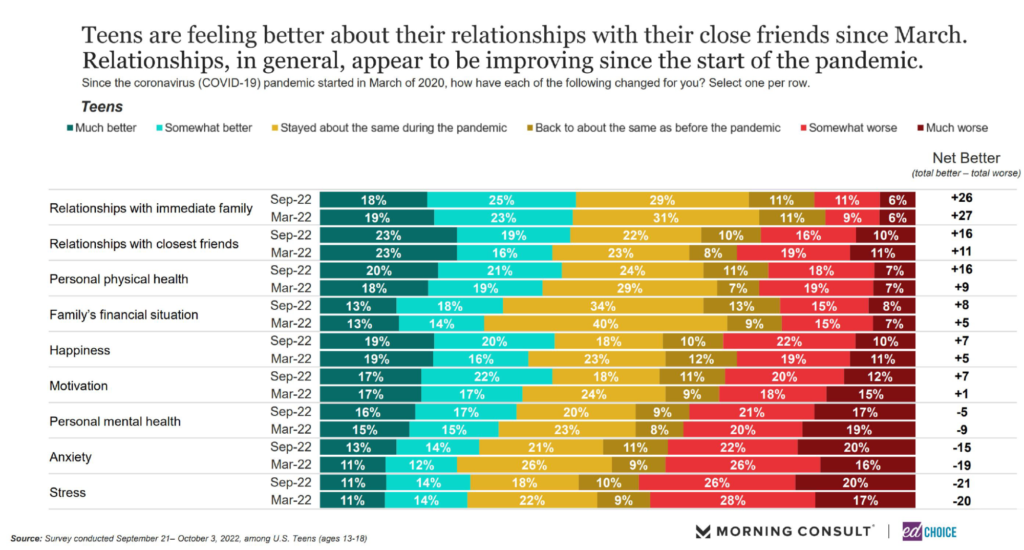
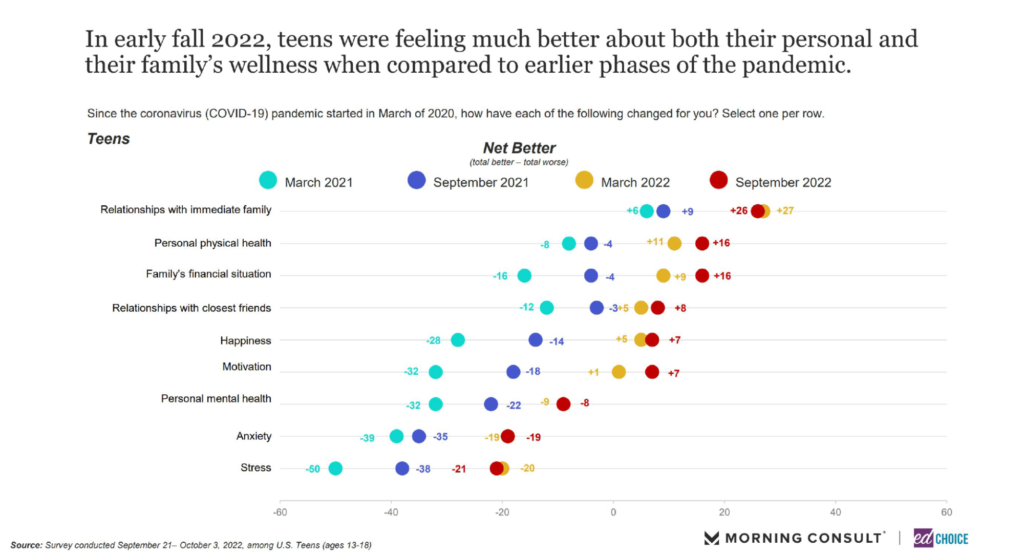
2. Roughly one-third of teens have changed schools in the last three years. This is the first time in our polling we have asked the question, “Other than moving from junior high/middle school to high school, have you changed schools in the last three years?” Of the teens who have changed schools, the majority have only changed schools once. Roughly one in four of the teens who have changed schools in the last three years changed schools twice. Additionally, teenagers being homeschooled this year were more likely to say they have changed schools in the last three years.
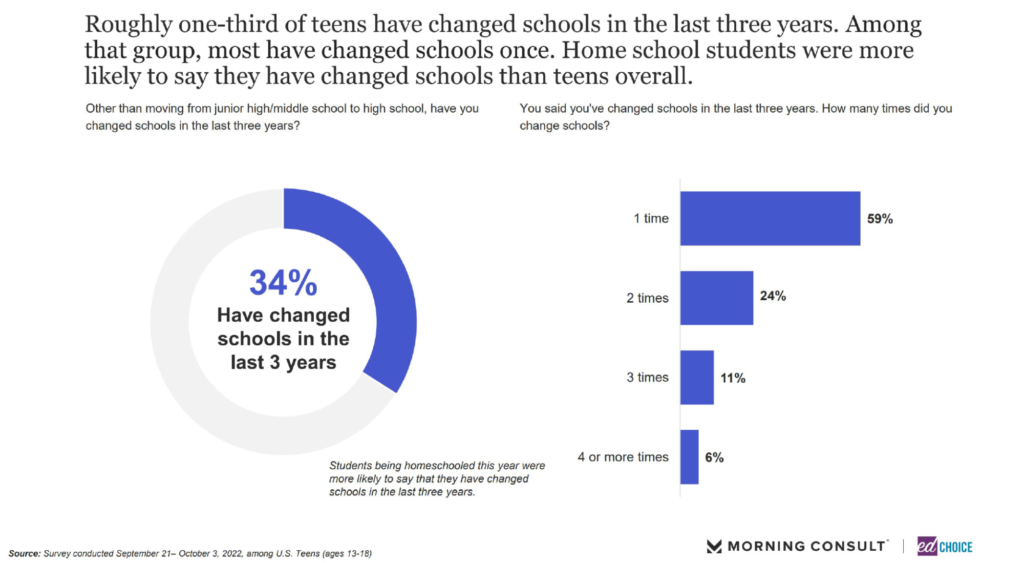
3. Teens are cooling to the idea of enrolling in an in-state four-year college. We asked teens if their plans for after high school are the same now as they were before the pandemic. We found that fewer teens were planning to enroll in an in-state four-year college now than before the pandemic. Additionally, there was a slight increase in teens who want to enroll in community college, join the workforce, take a gap year, or enroll in trade school. In our previous survey of teens in March, we observed a similar shift in the mindset of teens who were planning to enroll in a four-year college. One difference in this wave of the survey compared to March, though, is that teens held steady in their plans to enroll in an out-of-state four-year college.
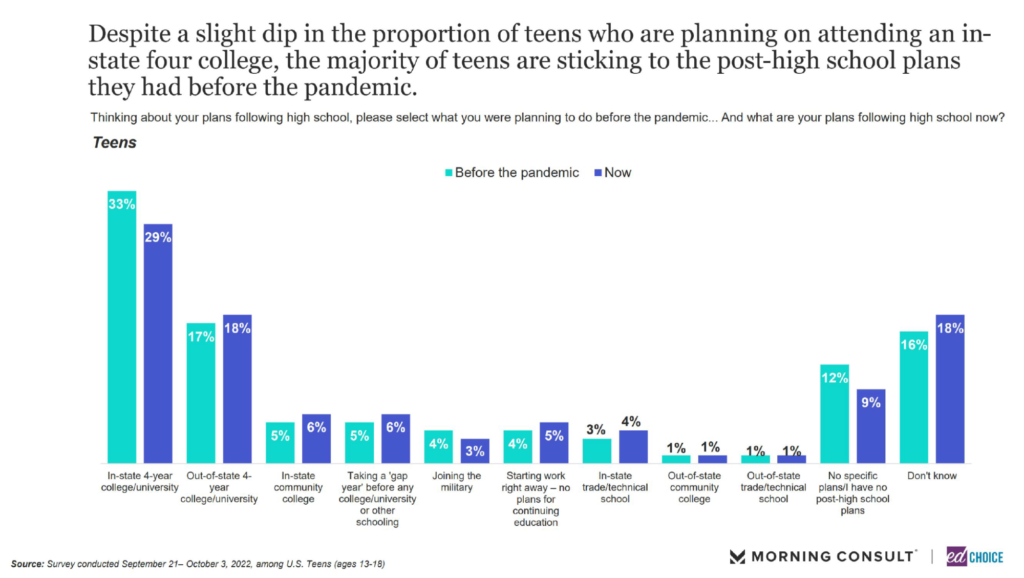
4. Teens are more likely to hear opinions about LGBTQ+ issues from other students rather than teachers. We asked teens whether they are hearing about different topics in school from their peers as well as from their teachers. The majority of teens reported experiencing their fellow classmates discussing LGBTQ issues, political opinions and religion. Race was another topic discussed frequently among teens and their fellow students, with 49 percent of teens experiencing conversations about the topic. Teens are much less likely to report observing their teachers discussing these topics. Roughly one-third of teens have experienced their teachers discussing LGBTQ+ issues, political opinions, religion, masking and vaccinations. Teens are less likely to report hearing their teachers discuss race, with only 28 percent of teens experiencing this.
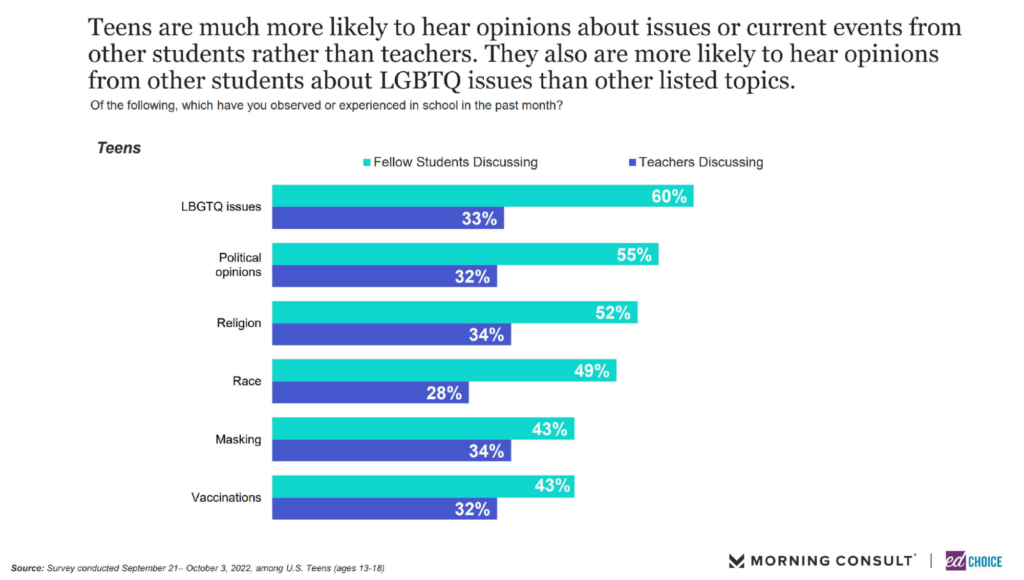
5. Teens feel less supported by their school and teachers when it comes to mental health. For the first time, we asked teens how supported they feel by their parents, friends, school and teachers. We wanted to gauge how supported teens feel in three different areas: their future, their academics, and their mental health. The results for their future and their academics look similar. Roughly half of teens feel supported by all four of the groups mentioned above. However, when looking at mental health, teens feel much more supported by their friends (65%) and parents (56%) than their school (33%) or their teachers (38%).
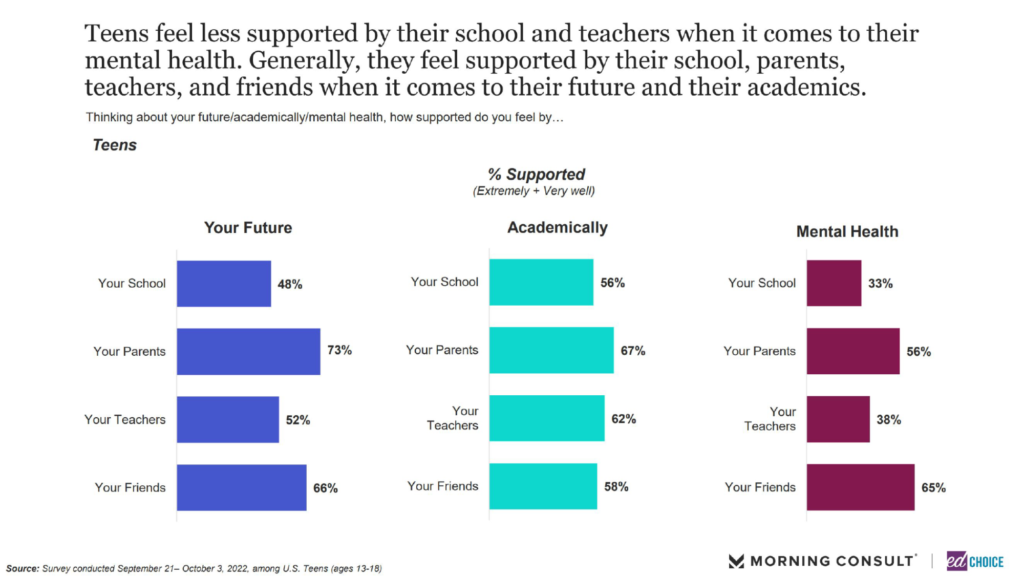
6. Teens are much more skeptical than school parents regarding how their school addresses mental health, guns, bullying and violent behaviors. From our monthly school parent survey in September, about half of school parents believe their child’s school is doing well handling those issues. Teens, on the other hand, are less enthusiastic about their school’s ability to handle those issues sufficiently. Roughly four in 10 teens believe their school handles issues regarding guns and violent behaviors well. Only 37 percent of teens feel positively about how their school handles bullying. Teens are most skeptical about how their school handles mental health, though. Only one-third of teens say their school handles issues surrounding mental health adequately.
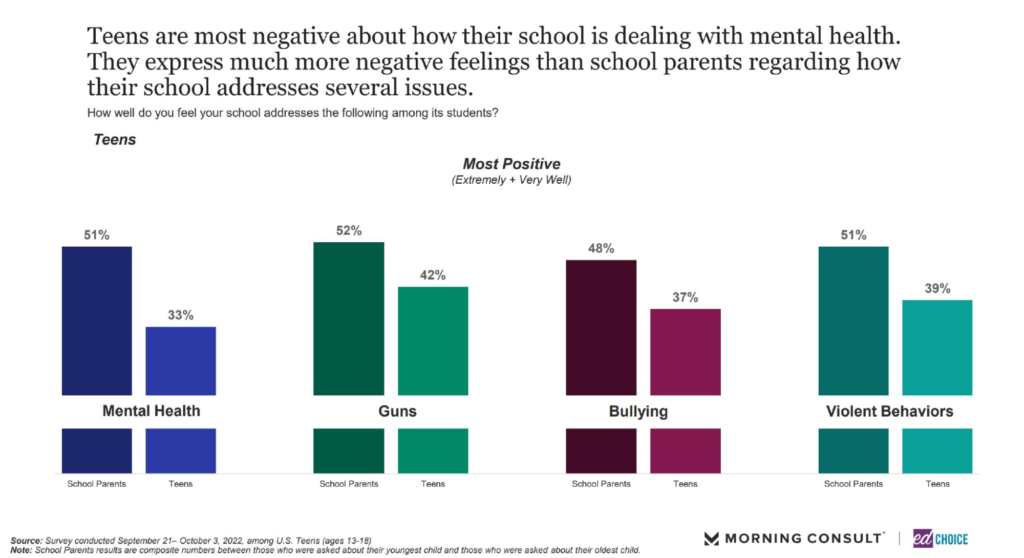
7. Teens who are planning on taking a gap year or joining the workforce after high school feel much more prepared than those planning to attend college. Nearly 60 percent of teens planning to join the workforce or take a gap year report feeling prepared for post-high school life, up 10 points from March. For comparison, only 36 percent of teens who are planning to enroll in a four-year college feel prepared. Furthermore, only 33 percent of teens planning to enroll in community college feel prepared.
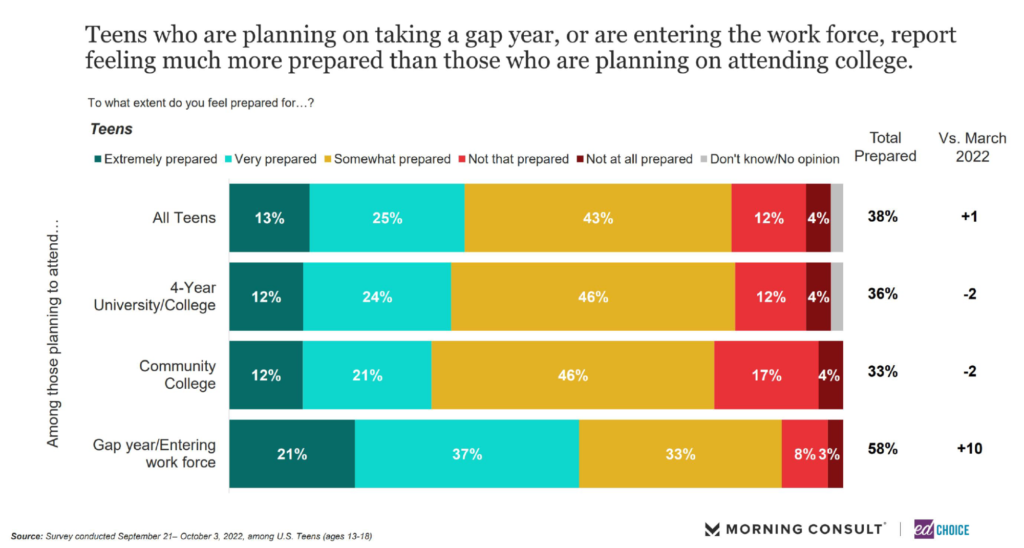
8. More teens want some version of hybrid schooling rather than full-time regular schooling. Roughly half of teens prefer some version of a hybrid schooling schedule. Slightly more than four in 10 teens want to attend in-person classes five days a week. However, there was a significant decline in the number of teens who want to only attend in-person classes since March. Only about one in eight teens prefer to learn virtually five days a week.
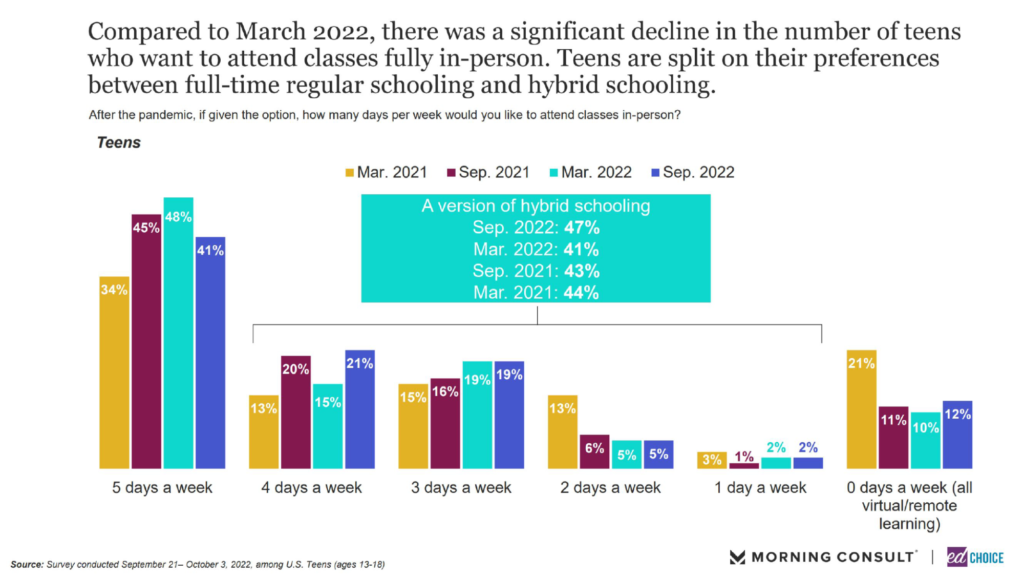
9. Teens are less concerned than school parents over the possibility of a violent intruder entering their school. Roughly one-third of teens are concerned about the possibility of a violent intruder entering their school. Nearly half of school parents, on the other hand, are concerned with that possibility. Interestingly, school parents are much more likely to feel their child’s school is handling issues like guns and violent behaviors well. Teens are a bit more skeptical of their schools handling of such issues yet are less concerned about the possibility of a violent intruder entering their school.
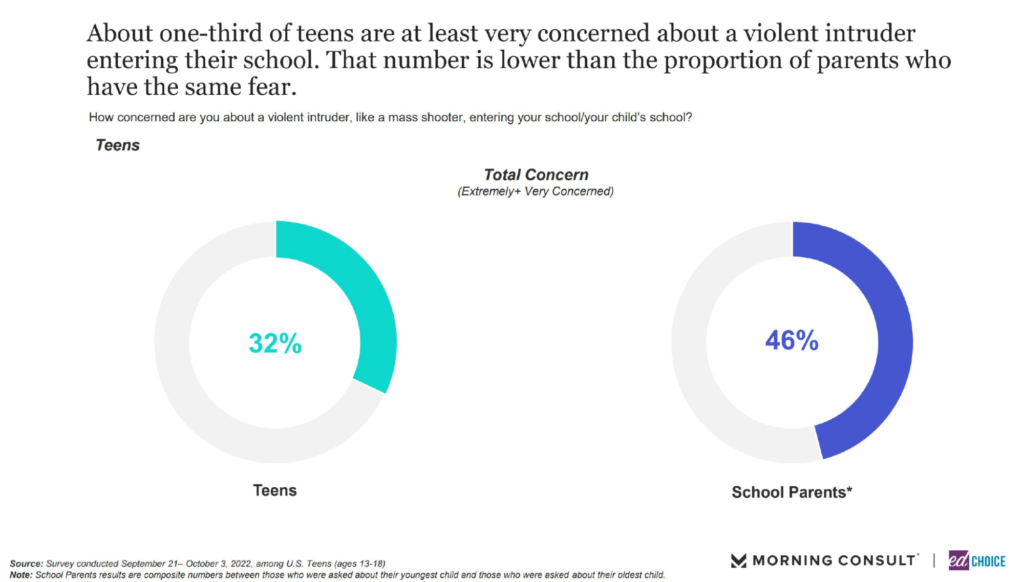
10. Teens cite skills for future employment as the most important thing to learn at school. Teens also view becoming independent thinkers and learning how to interact with others as important things to learn at school. Interestingly, only one-third of teens prioritize core academic subjects when it comes to what they want to learn at school. These findings suggest teens have different schooling priorities compared to school parents: In our September survey of school parents, nearly half of school parents said the main purpose of high school education is for students to learn the core academic subjects.
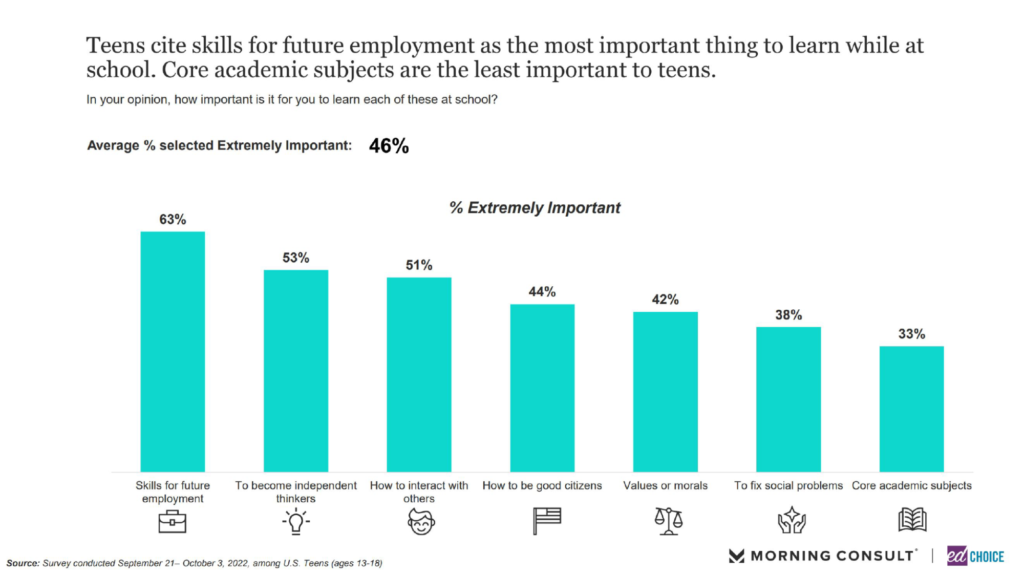
11. The majority of teens view internet search engines as the most beneficial tool to help with their schoolwork. Despite a decrease from March, 56 percent of teens currently use internet search engines to aid them in their schoolwork. Roughly four in 10 teens rely on family members for help on their schoolwork, up eight points from March. Utilizing teacher office hours was another tool teens have been employing, with 21 percent of teens indicating they use the office hours for help.
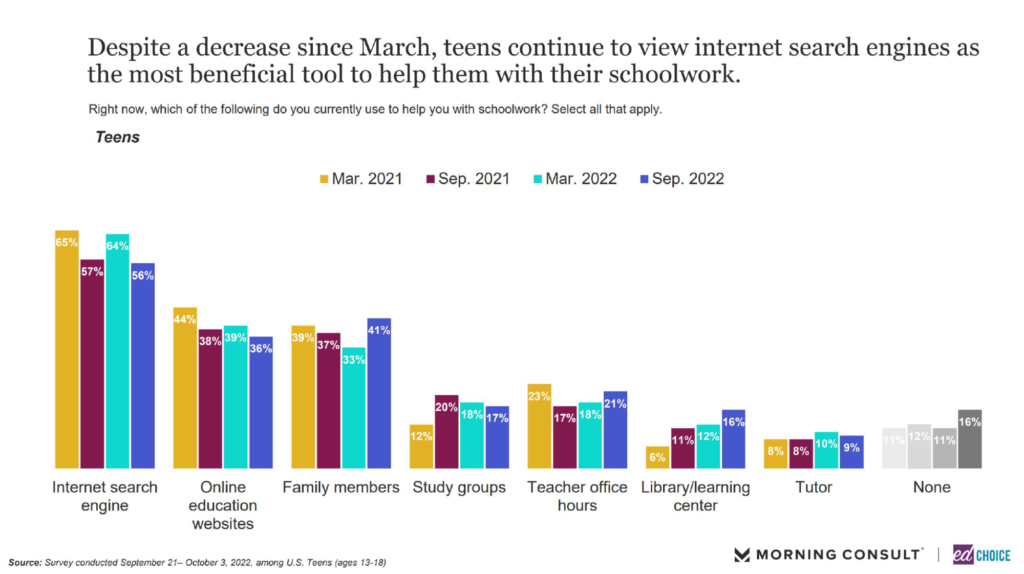
We also asked teens about how they prefer to connect with their peers. Perhaps unsurprisingly, cell phones and social media were toward the top of the list. Teens also connect with peers in the classroom, with nearly seven in 10 teens indicating this. In March of 2021, only 34 percent of teens said they use the classroom to connect with peers. In this wave, that figure essentially doubled as we continue to move past the COVID-19 pandemic.
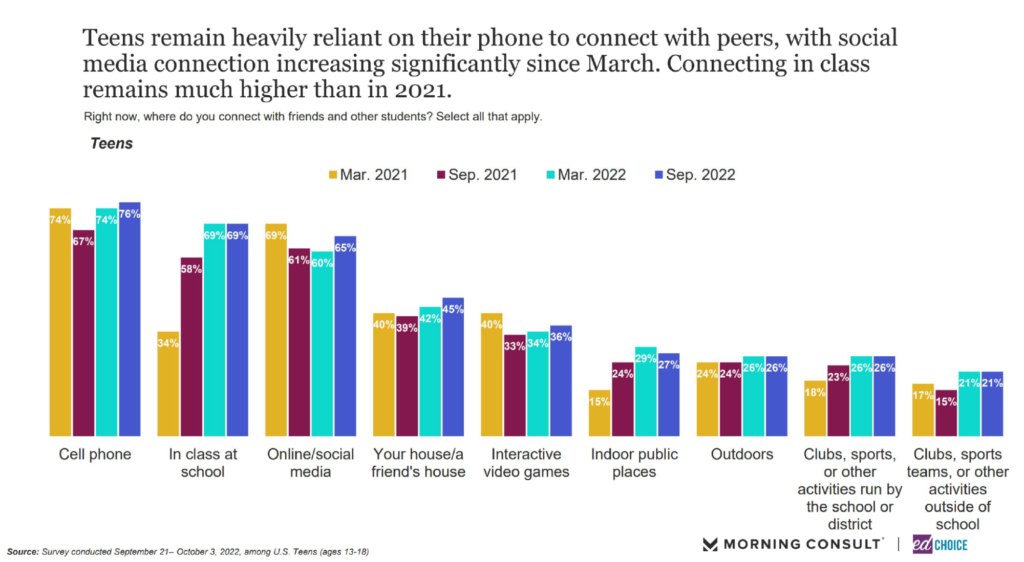
Visit the EdChoice Public Opinion Tracker site to access past reports, crosstabs, and questionnaires. We update our national and state dashboards every month. We also provide a more in-depth description of our research survey methods.
Our K-12 education polls archive is updated on a rolling basis, roughly a few times each month. Please don’t hesitate to let us know if we are missing any surveys, or if there are accidental errors.




